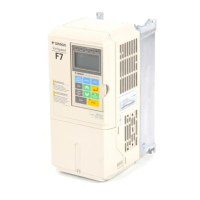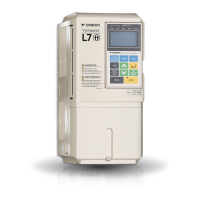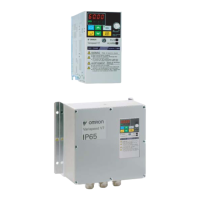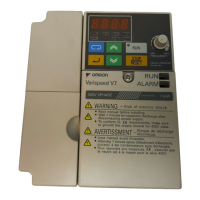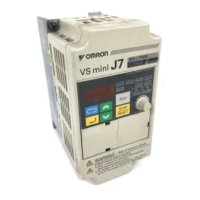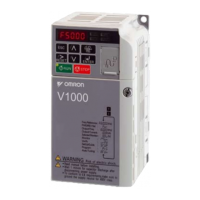Automatic Restart
6-45
Restarting Operation After Transient Fault (Auto Restart Function)
If an Inverter fault occurs during operation, the Inverter will perform self-diagnosis. If no fault is detected, the
Inverter will automatically restart. This is called the auto restart function.
Related Parameters
Multi-function Digital Outputs (H2-01 to H2-02)
Application Precautions
• The auto restart function can be applied to the following faults.
If an fault that is not listed above occurs the Inverter will not restart automatically and remain in fault con-
dition.
• If the fault output should be operated during auto restart L5-02 has to be set to 1
• The number of auto restarts is set in parameter L5-01. If a fault occurs the inverter performs the auto restart
corresponding to Fig 6.38. The inverter tries to restart every 5 msec for the maximum time of L5-03. All
retries performed during L5-03 are regarded as one restart attempt.
The internal counting of restart attempts is reset to 0 when the drive has run 10 minutes without fault.
Parameter
Number
Name
Setting
Range
Factory
Setting
Change
during
Operation
Access
Level
L5-01 Number of auto restart attempts 0 to 10 0 No A
L5-02 Auto restart operation selection 0 or 1 0 No A
L5-03 Fault Retry Time
0.5 to
180.0
10.0 s No A
Set Value Function
1E Automatic restart enabled
• OC (Overcurrent) • PF (Main circuit voltage fault)
• GF (Ground fault) • OL1 (Motor overload)
• PUF (DC bus fuse blown) • OL2 (Inverter overload)
• OV (Main circuit overvoltage) • OH1 (Motor overheat)
• UV1 (DC Bus Undervoltage, Main Circuit MC Operation Failure)
*1
*1. When L2-01 is set to 1 or 2 (continue operation during momentary power loss)
• OL3 (Overload)
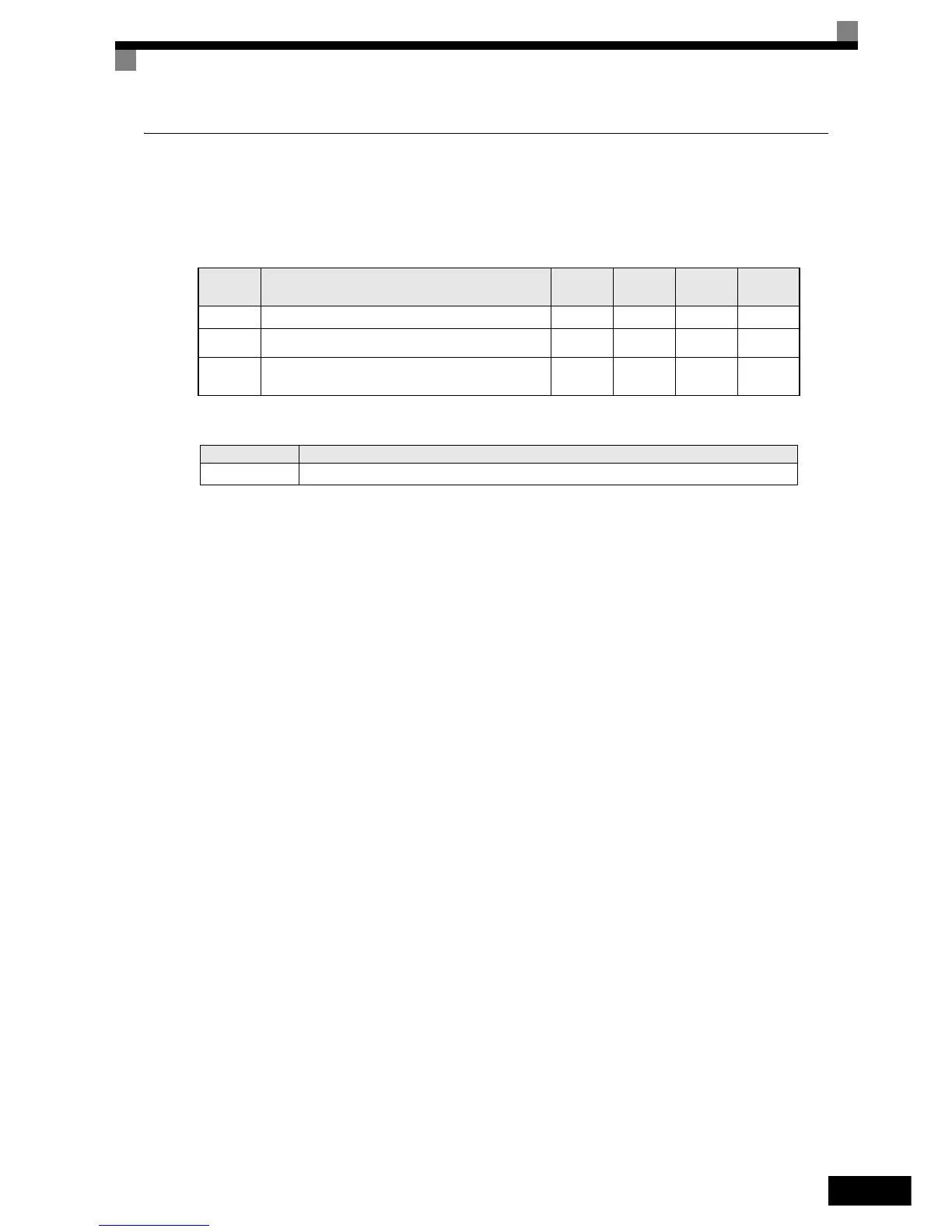